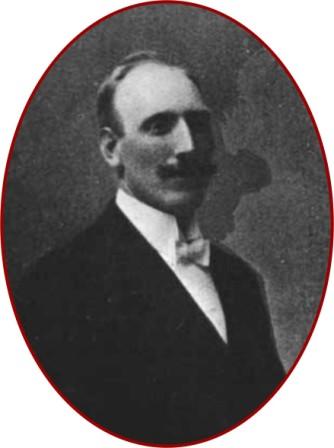John Brynteson
(1871 - 1959)

John Brynteson, date unknown.
Photo from Alaska's Digital Archives.
John Brynteson, probably the best all-around miner of the group 'The Three Lucky Swedes", was born into a poor farming family in Artemark, Sweden on August 13, 1871. He was educated in a nearby school. He came to the United States at the age of 16 and, as did many other Scandinavians, headed to the upper Peninsula of Michigan where he worked in copper and iron mines for about ten years. Citizenship was granted to Brynteson in Michigan in 1896.
In the spring of 1898, Brynteson arrived at Unalakleet, Alaska, on the eastern coast of Norton Sound, Bering Sea. His purpose was to find coal for the Swedish Covenant mission. The search for coal was unsuccessful, as was an early trip into the Fish River Flats searching for gold. Somewhat more successful was a trip into the Nome area with the Blake-Hultberg party in the summer of 1898. Brynteson and others discovered gold on river bar deposits of the Snake River.
A venture commenced in mid-September of 1898 with partners (and the other two 'Lucky Swedes') Lindeberg and Lindblom, was much more successful. Within a few days, Brynteson and partners knew they had a major discovery, and they went back to Golovin for supplies and aid in setting up the new mining district. With the exception of Gabe Price, who the miners must have trusted from the start, their associates were of Scandinavian descent. Brynteson married Emma Forsberg on May 2, 1900; the Bryntesons had three children by the writing of his brief biography by E.S. Harrison, who noted:
"While the products of his mines have made him a capitalist and placed him in a position of absolute financial independence, he still remains the unassuming man and courteous gentleman that he was before the days of his affluence."

The wedding of John Brynteson. According to the photo description, "The Native children were sort of adopted by Brynteson and brought to California."
Photo from Alaska's Digital Archives.
Brynteson was the first of the party to leave Alaska (1902). He was also the only one to return to his homeland to live. He did not squander his newly acquired wealth, but used it for other business ventures and for good works. In the United States, Brynteson established a home for sailors in San Francisco and endowed charitable works in Chicago. In Sweden, he financed the construction of the Ice Palace in Stockholm for the 1912 Olympic Games, and built factories. Brynteson was honored in his day, and his life story continues to attract the attention of Swedish scholars. In 1989, Olson published a new account of his life, roughly translated as From peasant farmer to gold king. The work is largely based on the research of Kjell-Ake Andersson.
Brynteson lived a long life, with a very adventurous start. He died in Sweden in 1959.
By Charles C. Hawley, 1998
